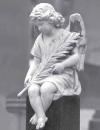Abstract
The cemeteries give evidence of the ideas of different societies in different times; these ideas can be observed in the iconography and in the legends found in their monuments. At the same time, these places are open files of their own towns and cities: names, dates, historical details, inhabitants´ feelings; all written down in headstones and monuments, tracing also social and cultural facts. Visiting those places is a way of getting to know something of the local history. In the specific case of the Presbytery Maestro Museum, the thumbs and monuments are historical and aesthetics testimonies of the social development of the city. Therefore, it is a main task to protect and preserve this patrimony in order to save the collective local memory; it will also permit to keep this patrimony for further studies and for everyone admiration, the most important statue collection of Peru.Apuntes is registered under a Creative Commons Attribution 4.0 International Public License. Thus, this work may be reproduced, distributed, and publicly shared in digital format, as long as the names of the authors and Pontificia Universidad Javeriana are acknowledged. Others are allowed to quote, adapt, transform, auto-archive, republish, and create based on this material, for any purpose (even commercial ones), provided the authorship is duly acknowledged, a link to the original work is provided, and it is specified if changes have been made. Pontificia Universidad Javeriana does not hold the rights of published works and the authors are solely responsible for the contents of their works; they keep the moral, intellectual, privacy, and publicity rights.
Approving the intervention of the work (review, copy-editing, translation, layout) and the following outreach, are granted through an use license and not through an assignment of rights. This means the journal and Pontificia Universidad Javeriana cannot be held responsible for any ethical malpractice by the authors. As a consequence of the protection granted by the use license, the journal is not required to publish recantations or modify information already published, unless the errata stems from the editorial management process. Publishing contents in this journal does not generate royalties for contributors.


